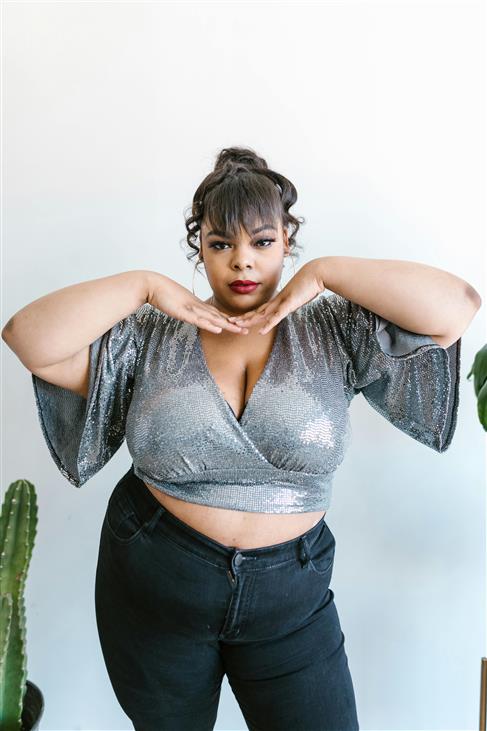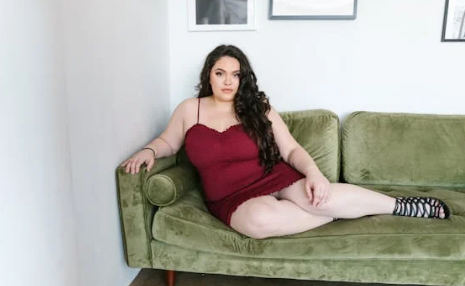
In the last decade, the phrase “body positivity” has been stitched into everything from ad campaigns to hashtag movements. Its original intention—to create space for people, especially those in marginalized bodies, to be seen and valued—was bold and necessary. It pushed back against decades of idealized beauty norms that excluded anyone who didn’t fit a narrow mold. But as the message spread and got rebranded, often by corporations and influencers, some began to ask: Has body positivity lost its radical edge?
Enter body neutrality, a quieter philosophy that’s gaining traction for those who feel fatigued by constant self-celebration. It doesn’t ask you to love your body every day. It asks you to live your life regardless of how you feel about it. Less sparkle, more peace. Less pressure, more presence.
Now, the cultural conversation is evolving again. As terms multiply and shift, many are rethinking what inclusivity really looks like—and whether our current language is helping or holding us back.
The Birth of a Movement
Body positivity didn’t begin on Instagram. It has roots in fat activism dating back to the 1960s, when groups like The Fat Underground in the U.S. began protesting medical discrimination and challenging the idea that fatness was inherently unhealthy or undesirable. This was a political movement, not a personal affirmation trend.
Over time, the message expanded. In the 2000s and early 2010s, it found new energy through online communities, particularly among women of color, LGBTQ+ folks, and disabled individuals. Their stories and images—bodies often unseen or rejected by mainstream media—created a collective sense of visibility and empowerment.
But as the body positivity message went mainstream, it also got sanitized. Brands co-opted it to sell products. Influencers began to champion “loving your curves”—as long as those curves came with hourglass proportions. The movement that had once made space for bodies of all kinds started narrowing again.

The Rise of Body Neutrality
Where body positivity asks you to affirm your beauty, body neutrality gives you permission not to think about it at all. It shifts the focus from appearance to function, from admiration to acceptance.
A body-neutral mindset might sound like:
- “My legs let me get through the day.”
- “I don’t love my arms, but they’re part of me and that’s enough.”
- “I ate what I wanted today and moved because it felt good, not because I had to earn anything.”
It’s a subtle but meaningful pivot—especially for those who find body positivity exhausting or inaccessible. Because let’s face it: not everyone can feel beautiful in a culture that has conditioned them to feel the opposite. For some, neutrality feels more honest, more achievable, and more sustainable.
Why Language Matters
Terms like “positive” and “neutral” don’t just describe how we feel—they shape how we’re expected to feel. And expectations can become their own kind of burden.
Telling people to love their bodies can feel liberating. But it can also become another standard to fail at. If you wake up feeling disconnected from your reflection, are you now failing at self-love, too?
Neutrality, in contrast, removes the obligation to perform any specific emotion. It allows room for fluctuation—for the days when you feel good, and for the ones when you just want to get dressed and move on.
But here’s the tension: in a society still structured around thinness, whiteness, able-bodiedness, and cis-normativity, neutrality can also feel like a luxury. For some, not thinking about your body is a sign of privilege, not progress. People whose bodies are consistently policed or excluded don’t always get to opt out of the conversation.
So the real question becomes: How do we make room for both?
Representation vs. Reality
We’re now at a cultural crossroads. On one side, brands and platforms continue to roll out campaigns that look more diverse on the surface. There are plus-size models, wheelchair users, gender-nonconforming bodies. The language of inclusion is louder than ever.
But on the ground, many still face medical discrimination, fatphobia, transphobia, and body surveillance. Wellness culture often disguises restrictive ideals behind words like “clean,” “toned,” or “optimal.” Social media is still full of filtered, sculpted images that subtly reinforce the same old hierarchies.
Representation matters—but it isn’t the finish line. Changing the photos is one thing. Changing how we think, treat, and legislate around bodies is something else entirely.

Beyond the Hashtags
If body positivity got us talking, and body neutrality got us listening to ourselves, maybe the next step is collective action. Not a single mindset, but a flexible framework that allows people to define their own relationships with their bodies—without pressure, comparison, or prescriptive rules.
This could look like:
- Making medical care more equitable and less weight-centric.
- Rethinking clothing sizing to reflect real human variation.
- Encouraging movement for pleasure, not punishment.
- Teaching kids about body diversity from a young age—without moralizing food or weight.
- Centering voices that have been historically excluded from beauty and health narratives.
Inclusivity doesn’t need one slogan. It needs space—for contradictions, discomfort, progress, and pause.
Toward a More Honest Future
Body positivity isn’t wrong. It’s just not one-size-fits-all. Some people need affirmation. Others need neutrality. Most need a bit of both, depending on the day.
What we’re really grappling with isn’t just language—it’s the emotional toll of living in a body that the world constantly measures. And the fact that even our attempts to escape that pressure can sometimes become new forms of performance.
But maybe the most radical act is this: refusing to let our self-worth be dictated by appearance at all. Not because bodies don’t matter, but because they matter too much in a culture that hasn’t yet figured out how to see them clearly.
So whether you love your body, tolerate it, or don’t think about it much at all—that’s your right. And maybe true inclusivity means making room for every one of those experiences, without judgment or expectation.
That’s not a movement. That’s just being human.



